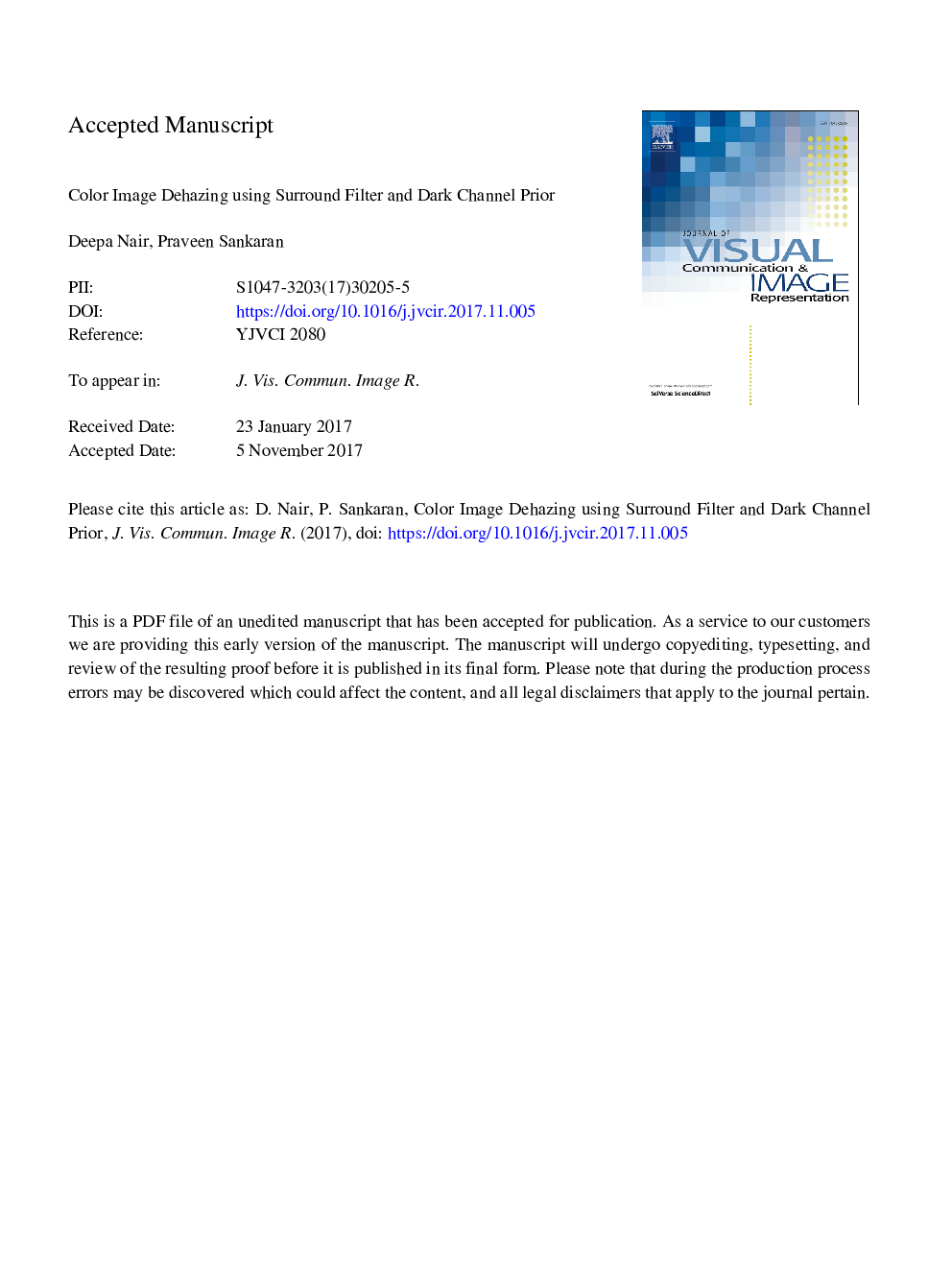| Article ID | Journal | Published Year | Pages | File Type |
|---|---|---|---|---|
| 6938346 | Journal of Visual Communication and Image Representation | 2018 | 20 Pages |
Abstract
Outdoor images are often degraded by haze, resulting in a distinctive gray or bluish hue which diminishes visibility. Of the existing haze removal methods, the ones that are effective are computationally complex and memory intensive. In this paper, we propose a simple haze removal technique, whose computational complexity is that of a simple convolution. To this purpose, a center surround filter is employed to improve speed and memory requirements of the transmission estimation in image dehazing. This can be useful for real time applications such as driver assistance, runway hazard detection and surveillance. The proposed technique relies on deriving an alternative transmission estimate by filtering the input image in three different color spaces, namely RGB, Lab and HSV. The effectiveness of the proposed method is compared with that of other state of the art methods using a subjective quality assessment method and a number of objective quality assessment methods.
Related Topics
Physical Sciences and Engineering
Computer Science
Computer Vision and Pattern Recognition
Authors
Deepa Nair, Praveen Sankaran,
